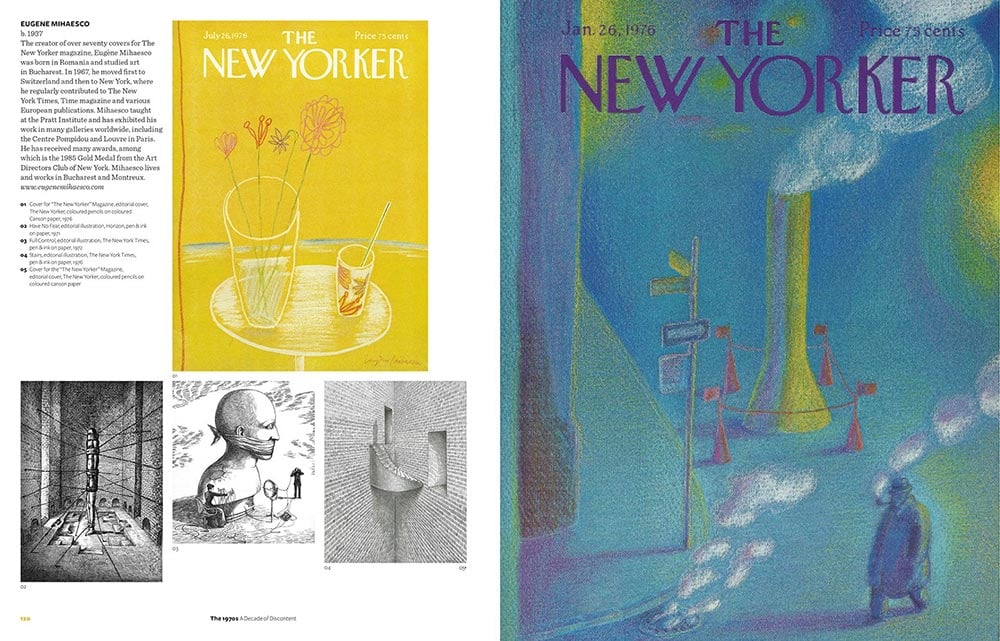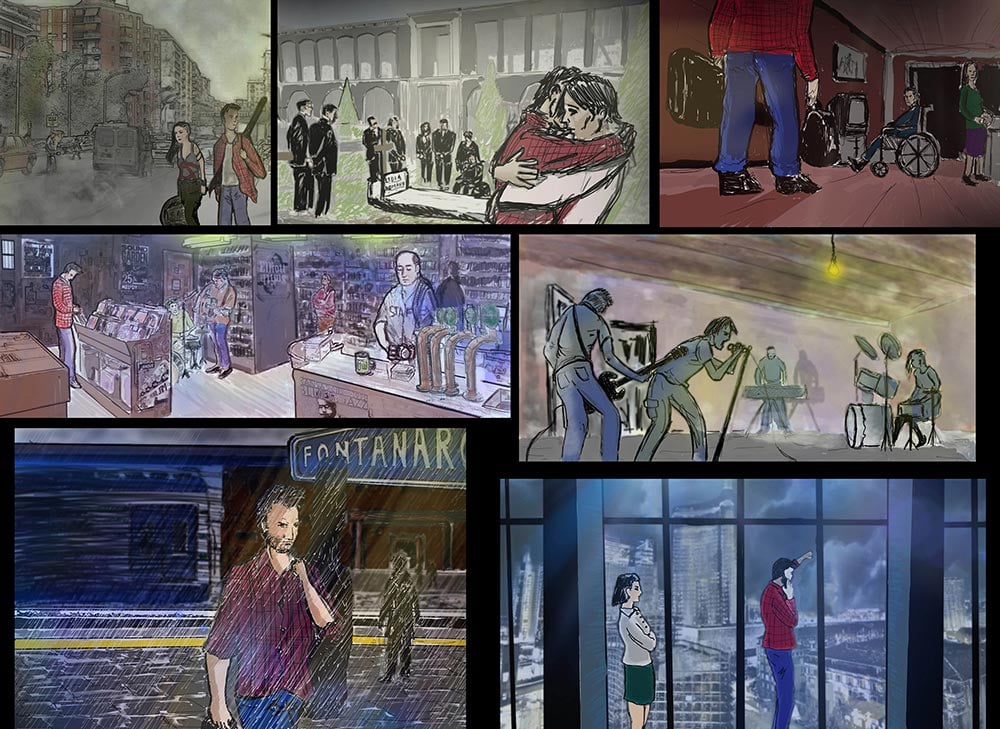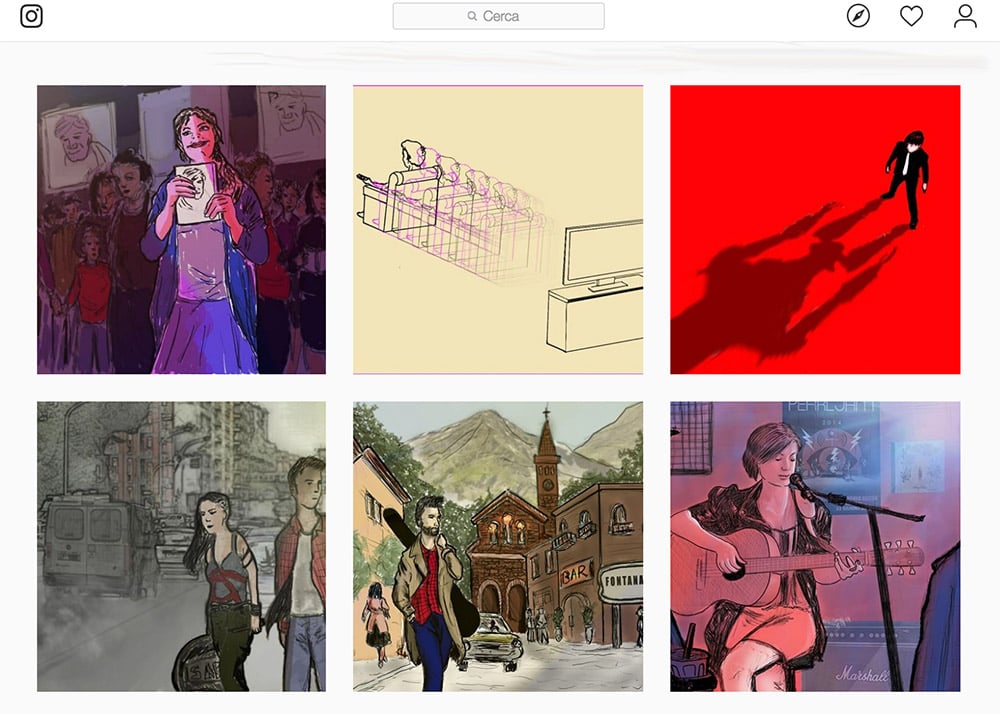Making drawing and illustration their profession is the aspiration of many. However, not everyone succeeds in becoming a professional illustrator and making their passion a job that allows them to pay the bills. As time goes by, many stop, thinking they have no talent or stopping at the first difficulties. But talent is not necessarily an innate thing: in fact, creativity is an exercise that must be cultivated every day.
Turning one’s passion into a profession, in this case as an illustrator, presupposes a series of important steps to take. Today we will look at a roadmap with practical tips for becoming an illustrator.

1 – Becoming an illustrator: Getting started is the hardest thing.
A solid foundation in any creative work is essential, including becoming an illustrator. One must first:
- Practice a lot: you have to be an expert in your subject, so practice every day to know anatomy, color, composition thoroughly. Attending an illustration school to get a proper education might be helpful, but it is not necessarily necessary. There are also several online solutions, including Skillshare, which offers good illustration courses taught by successful professional illustrators.
- Digital or traditional illustration: this is not important; in fact, you need to experiment with different techniques. It is essential to “get your hands dirty,” to make mistakes, to try again. A finished illustration is better than a perfect one. You have to give yourself goals, even not extreme ones, such as producing one finished illustration a week. The book How to Be an Illustrator is a good place to start.
- Know who has gone before us: illustration should be studied, both contemporary authors and the greats of the past. This is to learn about the styles, techniques and possibilities that this craft can offer. Fifty Years of Illustration is a must-have volume on your desk. Becoming an illustrator also means having an accurate picture of the state of the art of illustration in the recent past and contamporary.

2 – Becoming an illustrator: Understand yourself before you make yourself understood
Once you have built a solid technical foundation and are familiar with the work of several authors, a path begins that can be long and winding, but necessary. Those who want to become illustrators must ask themselves a fundamental first question: who am I? The answer is not simple at all, because initially one tends to copy the style of one’s favorite authors.
You have to at some point find your own voice, certainly with influences from what you have studied, but unique enough to make what you produce personal, to be recognizable and create a strong personality through your illustrations.
In time you will figure out what you are good at, creating what you love: children’s illustration? Sci-fi themed? Or spanning different genres but maintaining a consistent style? This is about getting identified and making yourself useful to the marketing goals of a specific magazine or media agency. The goal is not to look at one’s illustration and feel satisfied, but to understand the needs of potential clients (newspapers, magazines, agencies, events) and to produce work that works, that tells a clear and exciting story when paired with text. Becoming a professional illustrator requires understanding where one’s skills and abilities can be put to practical use.

3 – Becoming an illustrator: Building your own brand.
Many illustrators work as freelancers: this means looking for clients to work with, but also, and more importantly, communicating your work as well as possible in order to be found. It is not enough simply to be good, but also to try to have a clear vision to get noticed, online and offline, by potential clients.
There is much more within so-called personal branding beyond a client list or one’s portfolio, those come later. Instead, it’s about everything an illustrator does, what they write, their interests, their personality. Here are some tips and tools for building a strong identity:
- Provide an honest image of yourself-this way your followers and potential clients will also be able to properly represent the work that is shown. Branding means building a reputation: if you are honest with people, then you will see a future return.
- Be consistent: in the language you use, in your style, in the subjects you illustrate.
- Have a concrete visual identity: in this case you need to have a recognizable logo and name, business cards (here are some of our tips).
- Give yourself medium-, short- and long-term goals: these are useful to focus attention on a goal. “Within two years I want to publish an illustration of myself in that magazine.” Maybe it doesn’t come to fruition, but something has moved in the meantime: the production of new illustrations, the effort to contact that specific art director. All useful experiences to try again in the future. Moreover, this process can be shared (online and offline) to show itself active in everyone’s eyes.

4 – Becoming an illustrator: Promoting your work offline
Once you have gained experience in the field, chosen the best illustrations to show and the type of clients to work with, you need to move on to the acquisition phase. It means making it clear to potential clients that you are ready to take responsibility for certain work as an illustrator. If you really want to make money from this craft then you have to see yourself as a business. It means actively seeking commissions, connections with clients, in short calling yourself by one word: illustrator, no longer wannabe.
Here are some practical tips for making yourself known.
- Build your portfolio (and show it): this is essential and should best represent your style, ideas and contain the best work. For example, Pixartprinting offers several printing solutions such as magazines, catalogs and books. The possibilities are many and can meet different tastes: printing one’s portfolio in a professional way is essential to become a professional illustrator.
- Get in touch with the industry: attending industry fairs and events in your area and networking by meeting live people can be very helpful for the future. One must get out of one’s studio and not be afraid to show oneself for who one is. Becoming an illustrator also means knowing how to move in the different areas where one’s productions can find a market.
- Get your work into the hands of art directors: make a potential list of clients you would like to work with and trace it back to those who make decisions about publications. You need to have a thorough knowledge of what the agency or magazine you are proposing to is all about; there is no point in proposing without knowing what problems you can solve for the client. A traditional, but still useful, method is to send short paper letters with printed material, such as a small card or postcard with your own illustration to announce that you are available.

5 – Becoming an illustrator: Promoting your work online
Becoming an illustrator is also about image. Today the Internet plays a key role in promoting one’s work. It is important to create one’s digital presence day after day; it is essential to see one’s work “flourish.” The advice is to create an online portfolio of one’s work, even with a blog to tell one’s journey and experience, to be findable on Google as well. In addition, a presence on at least 3 platforms is also important:
- Instagram: very useful and full of art directors on the hunt for illustrators. On this platform hashtags are very important (e.g. #art, #illustrationtoday and many others). They serve to give visibility to one’s illustrations, so at least in this case they should always be used, clearly sparingly. The advice is to create a specific account to showcase one’s work and actively participate. Following one’s reference illustrators (a useful illustrator search engine here) and posting regularly can help a lot. Letting others know your appreciation is also very helpful: without going overboard, you can comment on other artists’ work using your own account. They must be constructive comments, however, not mere comment marketing in large quantities.
- Facebook, Behance and Dribble: these are also useful platforms where you can create a profile and show what you can do. The important thing is to actively participate and be consistent in posting material. Show your work, but also the context: it is not necessary to just post your finished drawings or illustrations. One can then post the process that led to the finished work, sketches, a video while creating something.
- Email: many art directors prefer to be contacted simply by email. One can then prepare an email list and send it to art directors, including some examples of their work and links to social profiles. There are also paid solutions that offer contact databases, but for example, even a simple search for the keyword “Art Director” on LinkedIn could pay off. Of course, never send material without fully knowing the company you are contacting.

Becoming an illustrator is certainly not easy and it is not a career from which to expect success right away: it takes a lot of patience, a lot of work and a few years to build a solid technical base and subsequently clients, but the ultimate satisfaction will be great. These are just a few ideas and inspirations to draw on to get your career started and become a professional illustrator. But one fundamental element cannot be missing for anyone who chooses to take this path: passion. Illustrating and drawing must really be something that gives you joy and pleasure. With this foundation in place, it will be easier to motivate you and push you to adopt creative solutions and put yourself out there to make your creativity and talent count.
Especially now that it is easy to self-sponsor and proporiate through networking, sincere and authentic passion becomes a key element in trying to become a professional illustrator.

6 – Becoming an illustrator: Dealing with bureaucracy.
As with any business, if you want to become an illustrator, you need to understand how to frame this occupation from a legal and tax perspective.
Getting oriented on this aspect is by no means simple. Let us now try to give you a few basic pointers that you will need to look into. First of all, you need to answer one question: do you make illustration your main professional activity, or is it rather a side business or hobby?
If it is a secondary and occasional activity, your activity may be taxed as occasional collaboration. The limit of compensation you can receive in a year is 5,000 euros net (the figure increases slightly for students under 25). If, on the other hand, you will be a professional illustrator, you will probably exceed this limit of receipts in a year. In this case you will have to open a VAT number.
Finally, things change if you plan to work primarily in publishing. In this case, usually the contracts with the publishing house involve the transfer of copyrights and it is not always necessary to open a VAT number.
7 – Become an illustrator (and continue to be one): Continuing education
Fulfilling your dream of becoming an illustrator is something great. Congratulations! But if you have become an illustrator, you will have realized one thing: it is not a stable goal that you reach, rather it is a constant journey – as tiring as it is exciting!
Once you start working as an illustrator continuous improvement and the search for contacts, new collaborations and stimulation will be your bread and butter. Here are some tips on that.
- Attend workshops and trainings: summer schools and courses for professionals are a great way to continue to update and give new directions to your work. They are also a good way to make friends and take a short break from the daily grind.
- Trade shows are another great opportunity to network, understand what other illustrators are doing and what clients are asking for. By attending you can also make yourself known in person! In Italy and Europe there are renowned international fairs such as the Bologna Children’s Book Fair, dedicated to children’s publishing and illustration, but also a host of smaller, equally interesting events!
- Books, magazines, libraries. Let’s not underestimate print resources. Books and manuals can help improve one’s style. Continued research also comes from discovering, observing and analyzing past masterpieces (especially those that are hidden and lesser known). Visits to branch libraries or historical bookstores are always an exciting source of surprises.
So come on: you have all the ingredients to get involved!
Good work

